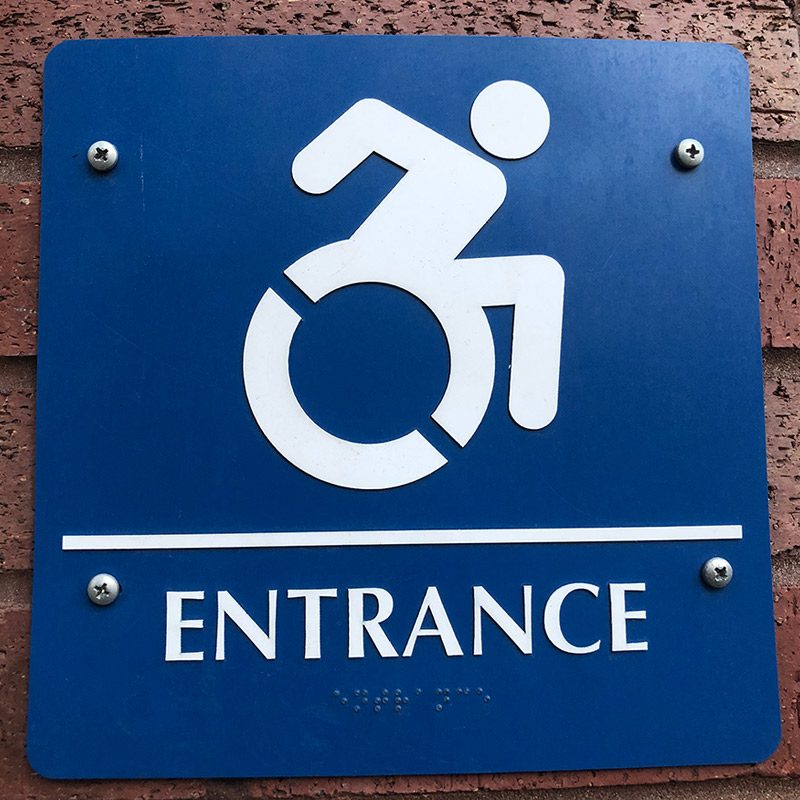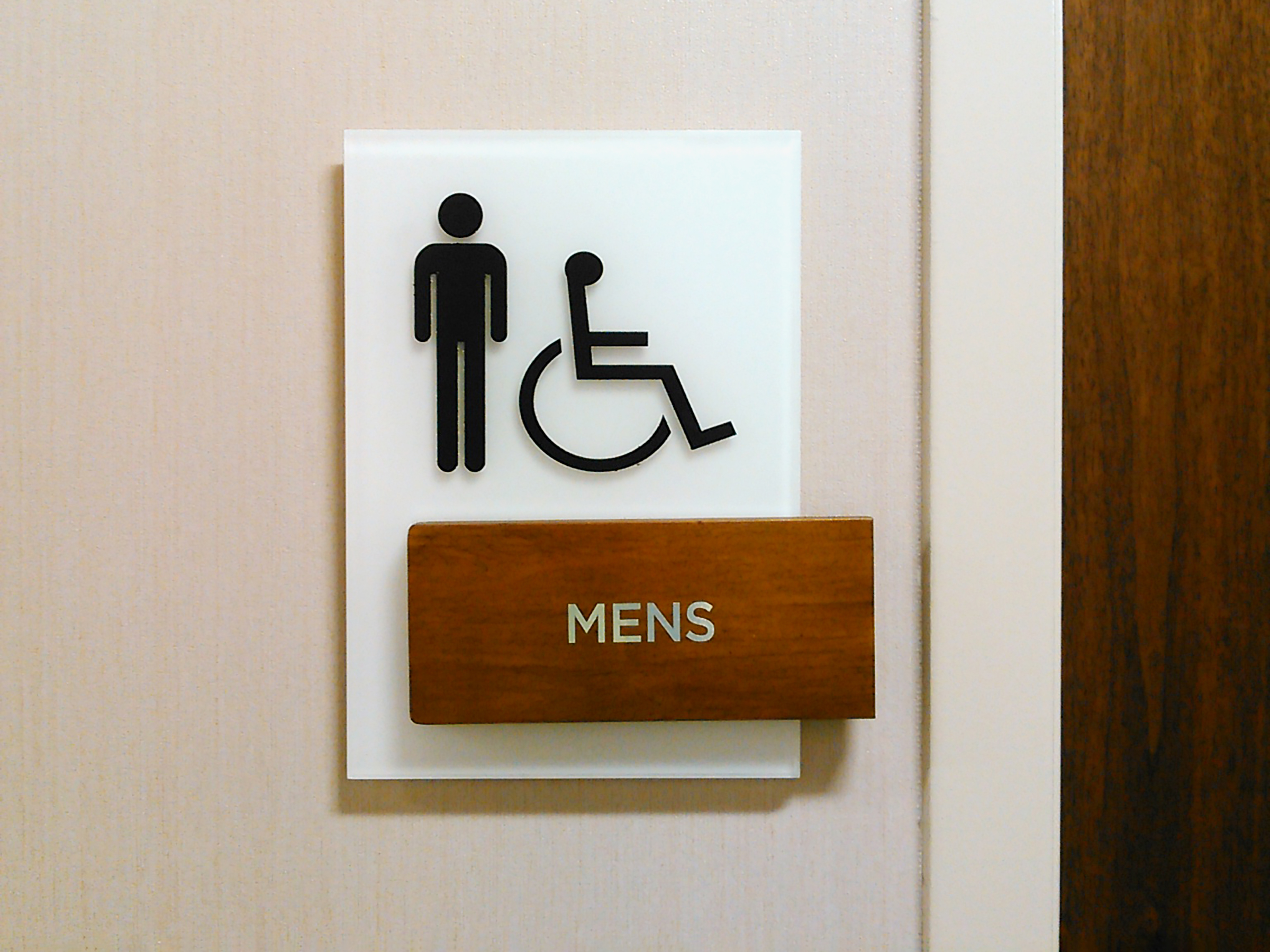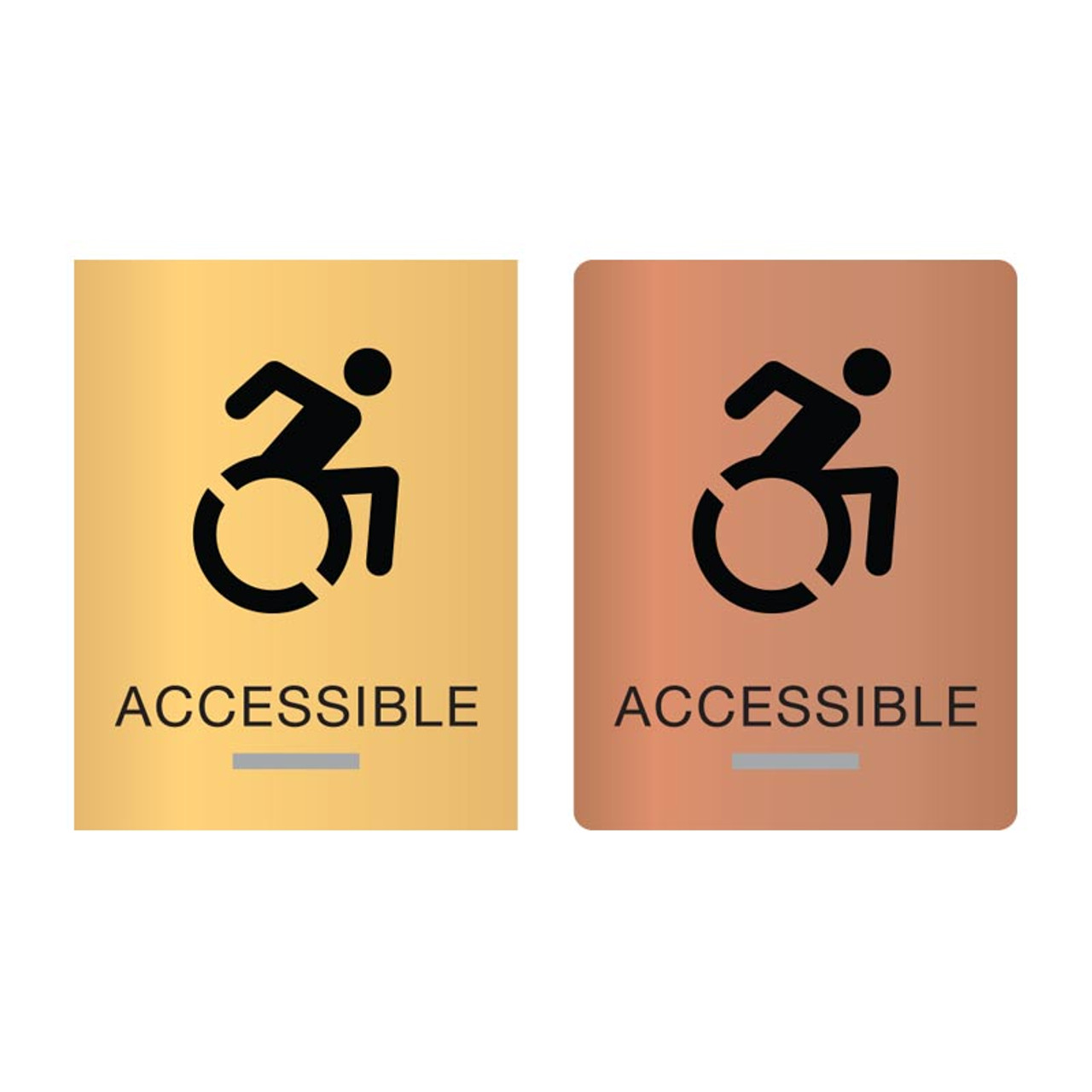The Role of ADA Signs in Adhering To Ease Of Access Specifications
The Role of ADA Signs in Adhering To Ease Of Access Specifications
Blog Article
Discovering the Trick Attributes of ADA Signs for Enhanced Ease Of Access
In the world of access, ADA indicators serve as silent yet effective allies, guaranteeing that areas are comprehensive and accessible for individuals with disabilities. By incorporating Braille and responsive aspects, these indicators damage obstacles for the visually damaged, while high-contrast shade schemes and readable fonts provide to varied aesthetic needs.
Relevance of ADA Compliance
Making sure conformity with the Americans with Disabilities Act (ADA) is vital for cultivating inclusivity and equal access in public areas and offices. The ADA, enacted in 1990, mandates that all public facilities, employers, and transport solutions accommodate individuals with handicaps, guaranteeing they delight in the very same rights and chances as others. Compliance with ADA requirements not just satisfies lawful obligations but likewise improves an organization's online reputation by demonstrating its commitment to diversity and inclusivity.
One of the key aspects of ADA conformity is the application of easily accessible signage. ADA signs are made to make sure that individuals with disabilities can conveniently navigate through rooms and buildings.
Furthermore, adhering to ADA laws can mitigate the threat of prospective fines and lawful effects. Organizations that stop working to abide with ADA standards might face legal actions or charges, which can be both destructive and monetarily challenging to their public picture. Hence, ADA compliance is important to cultivating a fair atmosphere for everyone.
Braille and Tactile Aspects
The incorporation of Braille and responsive components into ADA signs personifies the concepts of accessibility and inclusivity. It is normally positioned underneath the corresponding text on signs to make sure that individuals can access the information without visual aid.
Tactile aspects extend past Braille and consist of increased characters and symbols. These components are made to be discernible by touch, permitting people to identify space numbers, toilets, departures, and other important locations. The ADA sets certain standards relating to the size, spacing, and positioning of these tactile aspects to enhance readability and guarantee consistency across different settings.

High-Contrast Color Systems
High-contrast color pattern play a pivotal duty in improving the visibility and readability of ADA signs for people with aesthetic disabilities. These schemes are crucial as they make the most of the distinction in light reflectance between message and background, making certain that indications are conveniently noticeable, even from a distance. The Americans my link with Disabilities Act (ADA) mandates using certain color contrasts to accommodate those with minimal vision, making it a critical aspect of compliance.
The effectiveness of high-contrast colors exists in their ability to stand out in different lighting problems, including dimly lit atmospheres and areas with glare. Usually, dark message on a light history or light message on a dark background is used to attain ideal contrast. Black text on a yellow or white history offers a plain aesthetic distinction that aids in quick acknowledgment and comprehension.

Legible Fonts and Text Dimension
When thinking about the design of ADA signs, the choice of legible fonts and appropriate message size can not be overstated. The Americans with Disabilities Act (ADA) mandates that font styles must be not italic and sans-serif, oblique, script, highly attractive, or of unusual type.
According to ADA standards, the minimum message elevation ought to be 5/8 inch, and it must boost proportionally with checking out distance. Consistency in message size contributes to a cohesive aesthetic experience, helping people in pop over to this site browsing settings effectively.
Moreover, spacing in between letters and lines is integral to clarity. Ample spacing protects against characters from showing up crowded, improving readability. By sticking to these criteria, developers can significantly enhance ease of access, ensuring that signs serves its intended function for all individuals, no matter their aesthetic abilities.
Efficient Positioning Techniques
Strategic placement of ADA signage is important for making best use of ease of access and making sure conformity with legal standards. ADA standards specify that signs ought to be mounted at an elevation between 48 to 60 inches from the ground to ensure they are within the line of sight for both standing and seated individuals.
In addition, indicators have to be placed nearby to the latch side of doors to allow simple recognition prior to entry. Uniformity in indication placement throughout a facility enhances predictability, lowering complication and boosting general individual experience.

Verdict
ADA signs play an important function in promoting ease of access by integrating functions that deal with the requirements of individuals with disabilities. These elements jointly cultivate a comprehensive setting, emphasizing the value of ADA compliance in guaranteeing equal access for all.
In the world of access, ADA indicators serve as silent yet effective allies, making sure that spaces are comprehensive and navigable for individuals with impairments. The ADA, passed in 1990, mandates that all public centers, companies, and transportation solutions suit individuals with disabilities, guaranteeing they appreciate the exact same rights and chances as others. ADA Signs. ADA indications are designed to make certain that people with impairments can conveniently browse via buildings and rooms. ADA guidelines state that indicators must be mounted at an elevation between 48 to 60 inches from the ground to guarantee they are within the line of sight for both standing and seated individuals.ADA signs play an essential function in advertising availability by integrating attributes that resolve the requirements of people with specials needs
Report this page